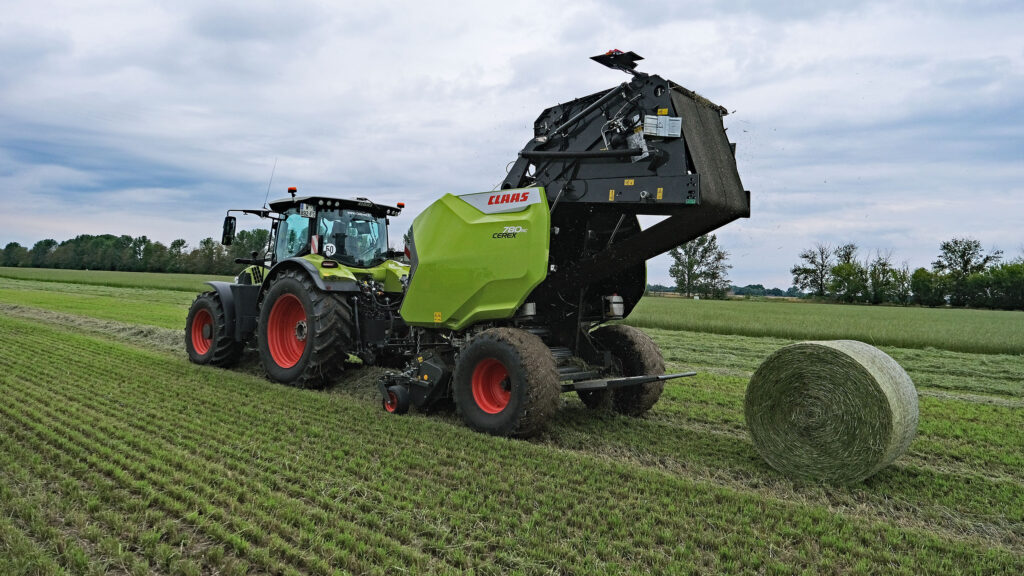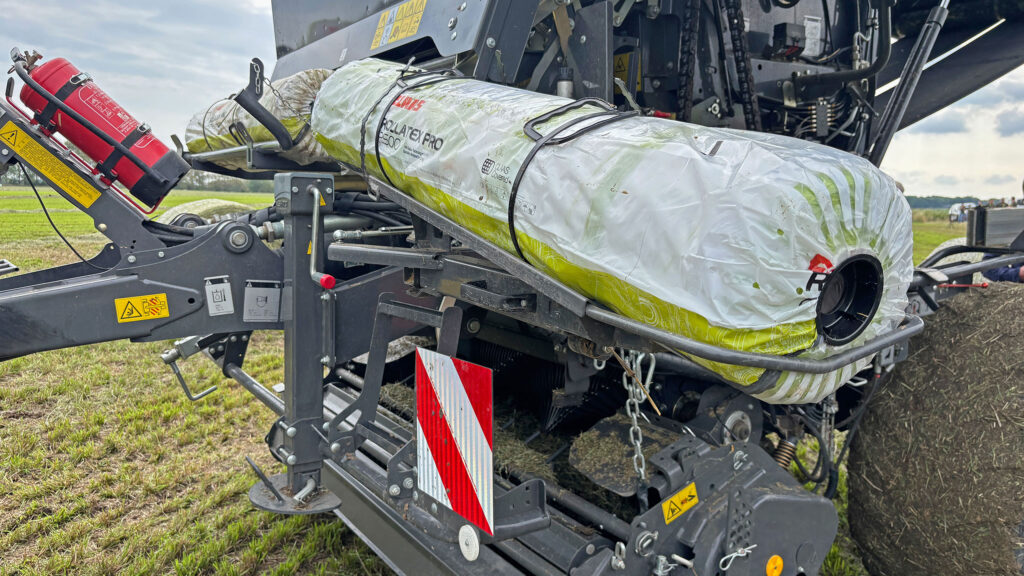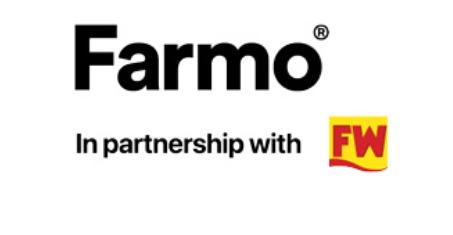Variable chamber Claas Cerex 700 enhances round bale density
 © Claas
© Claas Claas has bolstered its variable chamber round baler range, adding a heavy-duty model that packs far more crop into each bale.
Unlike the firm’s long-standing Variant, the Cerex 700 RC is fitted with just two belts, each of which is made from a single loop of tough reinforced rubber.
See also: Driver’s view: Liam Rooney’s Claas Quadrant 5300 Evolution baler
Together with a new clamping arm hydraulic cylinder, these allow high pressures to be generated in the chamber for forming bales with densities of up to 135kg/cu m.
In addition, the lack of gaps between belts reduces crop losses, particularly for those chopping to short lengths.
Output, by Claas’s reckoning, is up to 60 bales/hour, even when it’s set up to pack as much material in as possible, and it is designed to work in a range of crops including straw, hemp, hay and silage.
For the latter, an integrated soft-core function allows the density of the bale centres to be reduced if required.

© Claas
High input
Other contributors to the Cerex 700’s increased output over the current Variant are a 1,000rpm pto speed, a split-drive gearbox integrated into the chassis and a 2.1m wide “multiflow HD” pick-up.
This has five tine bars running in a cam track, with flexible plastic rather than steel bands.
Claas claims these are less prone to bending and they’re quicker to remove should a tine need replacing.
Crop is transferred from the pick-up to the chamber by a feed rotor fitted with 8mm spiral tines made out of hardened boron steel.
These are arranged over four rows and push the crop through the 25-knife chopper unit, giving a theoretical chop length of 44mm.
Operators can choose how many blades are engaged – 25, 13, 12 or none – and they can be swivelled in and out of work hydraulically via the isobus control terminal.
When working in irregular swaths, the cutting frame can spring open by 30mm to help maintain crop flow and reduce the risk of blockages.
And if it does get jammed, the unit can be lowered to clear it.
Split-drive gearbox
Perks of the split-drive gearbox are higher transmission of torque and reduced wear due to fewer components being driven from a single point.
The left side is responsible for powering the bale chamber, while the right side drives the cutting rotor via a duplex chain.
Work has gone into the tying system too, with a hydraulic net brake that maintains a high tension and claims to reduce net use by up to 15%.
Thanks to both side and front net storage, three rolls can be stored on the machine and there’s an integrated ramp that makes loading easier.
To help spread the baler’s 4.5t weight, buyers can choose from a range of flotation tyres.
The largest 620/50 R22.5 units are the same as those used on some of the firm’s big square balers.
Other features of note include work lights, a bale monitoring camera, a moisture meter, and a sensor that tells the operator that the bale has rolled clear of the tailgate.
There’s also a central lubrication system with sufficient oil supply for 14 hours of work.
Two Cerex models are available, with the 760RC offering bale sizes from 0.9 to 1.6m and the 780RC capable of pushing up to 1.83m.
Variant balers also get some updates for the 2026 season with UK machines getting the “multiflow HD” pick-up, drop-down “pro” cutting frame and an uprated pressure control system.

